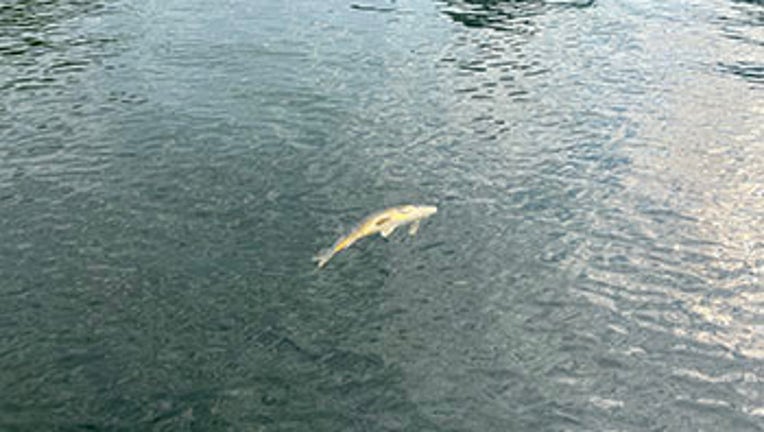What to do if you see dead fish in Michigan waters this spring

(Photo: Michigan DNR)
DETROIT (FOX 2) - Seeing dead fish in the spring is common, but sometimes it is a sign of a problem.
As ice melts, fish and other animals that died during the winter may be visible. This can be a result of stress caused by minimal feeding supplies in the winter, or rapid weather changes when temperatures are unseasonably warm.
Some bodies of water are more prone to animal deaths, including shallow lakes with excess aquatic vegetation and soft bottoms. Canals in urban areas may also experience a loss of animals due to nutrient runoff and pollution, according to the DNR.
"Winterkill is the most common type of fish kill," said Gary Whelan, Michigan Department of Natural Resources Fisheries Division Research manager. "As the season changes, it can be particularly common in shallow lakes, ponds, streams and canals. These kills are localized and typically do not affect the overall health of the fish populations or fishing quality."
A lack of oxygen can also lead to the death of fish. Oxygen levels drop when ice and snow block aquatic plants from getting sun, so the plants die.
Bacteria that decompose these dead plants then uses up the rest of the oxygen, leading to the death of fish.
"Winterkill begins with distressed fish gasping for air at holes in the ice and often ends with large numbers of dead fish that bloat as the water warms," Whelan said. "Dead fish and other aquatic life may appear fuzzy because of secondary infection by fungus, but the fungus was not the cause of death. The fish actually suffocated from a lack of dissolved oxygen from decaying plants and other dead aquatic animals under the ice."
If you see dead fish, report it to the DNR here or call 517-284-5830.
Fish kills of more than 25 should be reported immediately.
If you believe the dead fish are the result of non-natural causes, contact the nearest DNR office or the Michigan Pollution Emergency Alert System at 800-292-4706.

